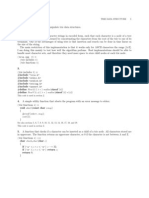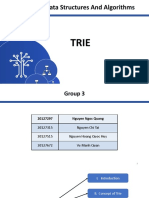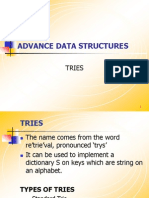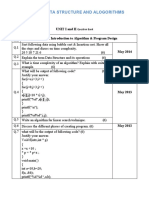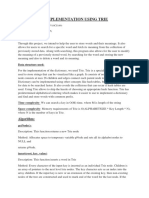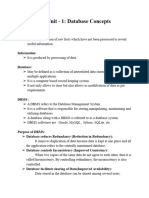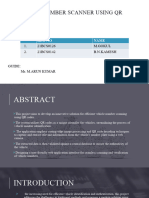0% found this document useful (0 votes)
21 views34 pagesDSA Unit V
The document outlines various exercises related to data structures, specifically focusing on B-trees and Trie trees, including construction, insertion, and search operations. It includes multiple questions requiring the construction of B-trees and B+ trees of different orders with given datasets, as well as explanations of Trie data structures and their operations. Additionally, it discusses the advantages of Trie trees and provides algorithms for insertion and deletion in B-trees and B+ trees.
Uploaded by
30 FYCM Mahesh LawareCopyright
© © All Rights Reserved
We take content rights seriously. If you suspect this is your content, claim it here.
Available Formats
Download as PDF, TXT or read online on Scribd
0% found this document useful (0 votes)
21 views34 pagesDSA Unit V
The document outlines various exercises related to data structures, specifically focusing on B-trees and Trie trees, including construction, insertion, and search operations. It includes multiple questions requiring the construction of B-trees and B+ trees of different orders with given datasets, as well as explanations of Trie data structures and their operations. Additionally, it discusses the advantages of Trie trees and provides algorithms for insertion and deletion in B-trees and B+ trees.
Uploaded by
30 FYCM Mahesh LawareCopyright
© © All Rights Reserved
We take content rights seriously. If you suspect this is your content, claim it here.
Available Formats
Download as PDF, TXT or read online on Scribd
/ 34











